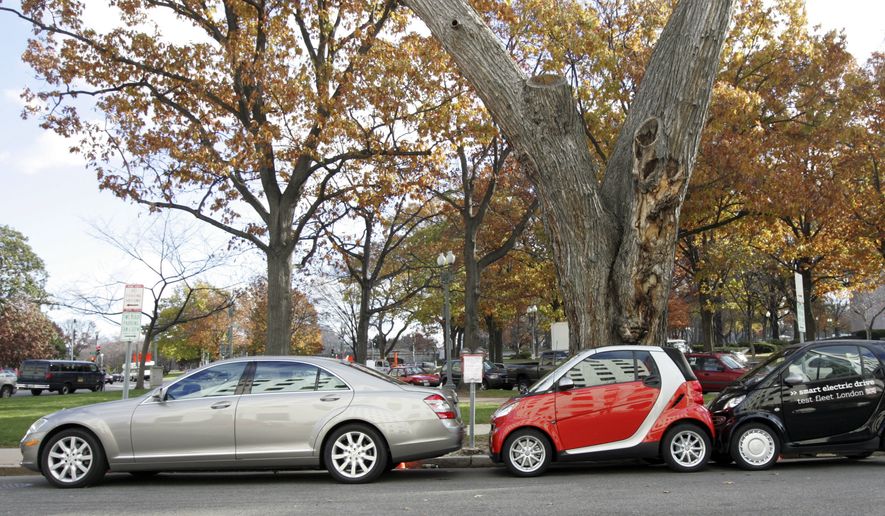The District Department of Transportation (DDOT) is planning to expand a pilot program to manage parking in the city, now that officials say ride-sharing services have made curbside safety a key concern.
DDOT intends to expand its ParkDC program to include RFK Stadium in Southeast, though a specific expansion date has not yet been set, said Soumya S. Dey, the agency’s associate director of traffic operations and safety.
ParkDC has established nighttime pick-up/drop-off zones on Connecticut Avenue NW in the Dupont Circle area to maximize parking spaces and maintain traffic flow. Since Aug. 30, vehicles parked in the zones that are not picking up or dropping off passengers are towed.
What’s more, the program has adjusted parking meter rates in the Penn Quarter and Chinatown neighborhoods to improve parking availability via demand-based pricing.
Mr. Dey said ParkDC’s algorithms have helped DDOT develop ways to redirect parking and encourage shorter parking periods.
He said ParkDC’s first year of data from 2016-2017 show improvements in Chinatown and Penn Quarter:
• A 5 percent increase in parking spaces available at any given time, resulting in drivers spending an average of seven fewer minutes circling for a spot.
• 10 percent to 15 percent of downtown traffic consisting of motorists circling for a parking spot, down from 25 percent in 2016.
• A 55 percent decrease in double parking citation.
• 12 percent of underutilized parking spots now being used frequently.
Mr. Dey said conversations about 24-hour pick-up/drop-off locations for ride-sharing services like Uber and Lyft — and one day, autonomous vehicles — are driving the next generation of parking adjustments, helping transform curbside management from a “municipal” to a “mainstream” issue.
He said it was unlikely that the 1,000 new residents who settle in the city each month contributed to ParkDC’s perceived successes because “a significant portion of these people don’t own vehicles.”
Brett Peze is vice president of parking and mobility solutions at Conduent Transportation, with whom DDOT contracted with to help crunch the program’s data. He noted that ParkDC “also ties very eloquently with Vision Zero,” the mayor’s plan to end traffic-related fatalities by 2024, because a “number of traffic accidents [are] related to the number of distracted drivers circling for parking.”
Conduent helped install about 450 sensors to monitor about 1,000 parking spots in the test areas.
Mr. Dey said DDOT collected that data — as well as information about traffic tickets, meter payments and CCTV footage — and “put them a blender” to create algorithms that could predict where people park and how long they stay.
DDOT then raised or lowered meter prices, and increased or decreased allowed parking times to encourage drivers to park at underutilized spots, and to move out quicker from popular spots.
Mr. Peze said the agency’s ParkDC mobile app is part of a nationwide push to inform drivers about parking conditions before they set out and consider other modes of transportation.
“Typically the parking info is not a part of that decision making,” he said. “That means people are driving to a location expecting to find parking and being frustrated when they can’t.”
“By 2022, we want 75 of the trips made in D.C. to be made by nonautomobile modes,” Mr. Dey said, adding that DDOT is eyeing the city’s remaining 17,000 parking spots for a data-driven upgrade.
In the meantime, Mr. Dey said ParkDC’s algorithms indicate that parking before Thanksgiving “is a different pattern than what you would see on a typical weekday.” But by Wednesday, the annual exodus could mean less traffic than usual and better-than-usual chances of prime parking, he said.
• Julia Airey can be reached at jairey@washingtontimes.com.




Please read our comment policy before commenting.